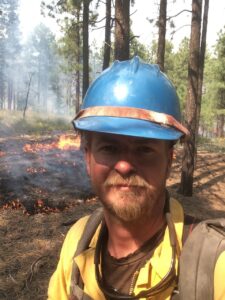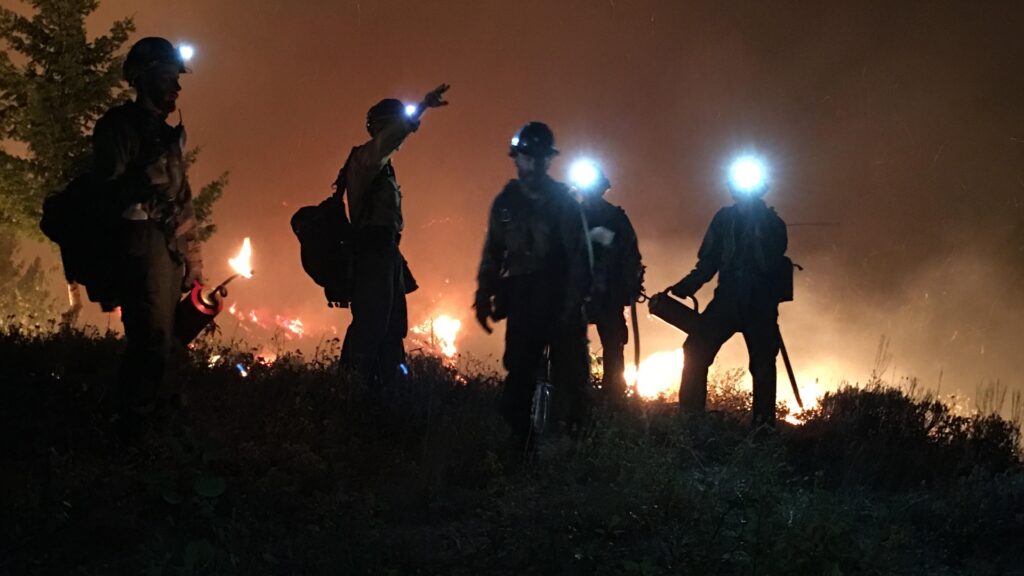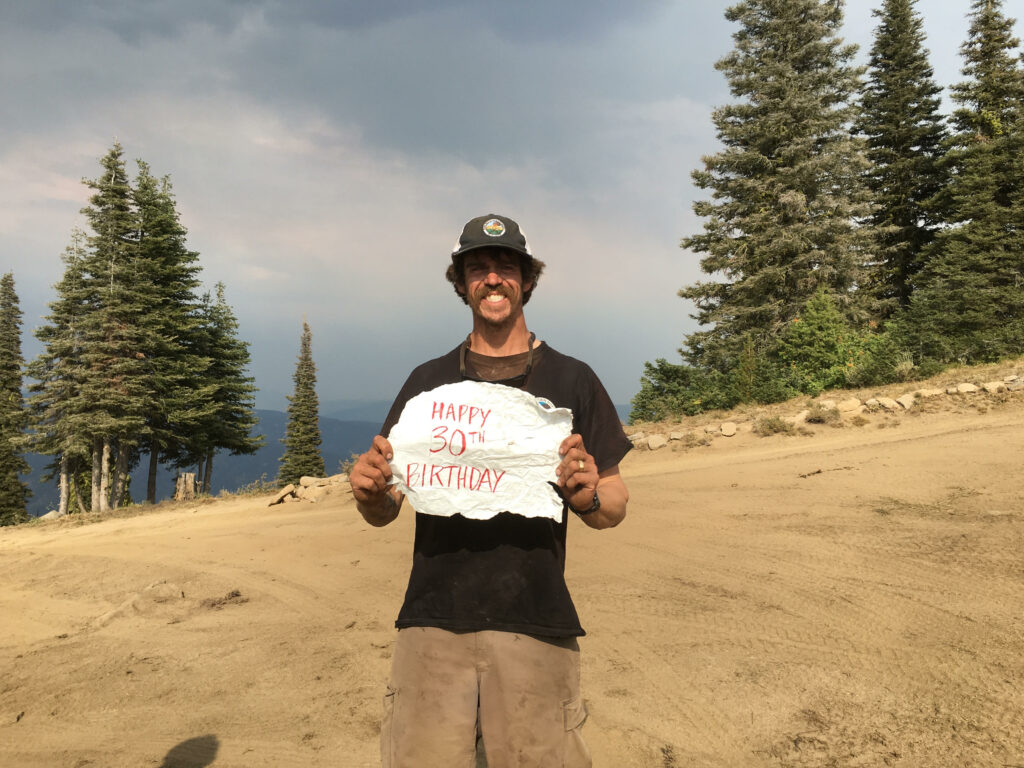Fighting More Than Fire
Facing bigger blazes, longer hours and low pay, wildland firefighters ask Congress and federal agencies for help
By Laura Paskus
The last 24 months have been particularly brutal for wildland firefighters in the western United States. As wildfire season lengthens and fires burn hotter and bigger, firefighters are immersed in emergency situations for weeks and months on end—knowing the years ahead will bring worse.
“It’s a public service that I think a lot of us feel satisfied with at the end of the day,” says Marcus Cornwell, who earned his Red Card, or certification, in 1998. He spent 15 years on interagency hotshot crews and now works on an incident management team. “But the realities that we’re starting to face now with potential climate change…I would say firefighters are in a crisis mode.”
Rising temperatures and drought drive some of the problems. But wildland firefighters face other challenges that have burrowed deep into the fabric of the federal workforce.

Assignments keep them away from home for at least three weeks at a time—longer if they can’t make it home during their short breaks. Men and women work 16-hour days, usually sleeping on the ground and eating military-ration meals. Some live in their cars.
The majority earn low pay and lack medical or retirement benefits, all while facing the daily risk of injury and death.
When smokejumper Tim Hart was injured fighting the Ecks Fire this spring in southern New Mexico, his family set up a GoFundMe campaign to help cover medical bills. Hart died from his injuries. And Cornwell says it’s common for families to rely on donations, like from the nonprofit Wildland Firefighter Foundation.
Federal agencies are trying to improve, he says. But he calls the Office of Workers’ Compensation “broken.”
“We have firefighters struggling, they get injured on the job, they’re struggling year after year to basically just survive these catastrophic incidents [and] they have mountains of paperwork and very little help from the federal government,” he says. “And basically, it’s easier to just get outside donations to make it through.”
Among the ranks of wildland firefighters, depression, trauma, drug and alcohol abuse—even suicide—are all more common than people realize.
And fewer people want these jobs, which are highly specialized and physically demanding.
“Ten, 15 years ago, we would have 400 or 500 applicants for an entry-level fire job on some of the crews I worked on. Now, we’re lucky if we see 50,” Cornwell says. “With those kinds of numbers, we’re headed to a train wreck, where one time there’s going to be a town here in New Mexico that’s going to call for federal assistance, federal help. And guess what? Nobody’s going to show up.”

For 11 years, Jonathon Golden worked as a wildland firefighter, clocking up to a thousand hours of overtime “just to afford life,” he says.
It wasn’t just low pay and lack of security that spurred him to leave the profession. He felt overwhelmed by the isolation from family and friends and the burden of missing birthdays, anniversaries, graduations.
“You miss out on these significant moments and when it comes time to lie down at night and try to get some sleep you think about these things and it really begins to weigh on you: ‘What am I missing out on? What am I doing here?’” Golden says.

Many firefighters feign machismo or suppress these thoughts.
“You’re privately struggling on a day-to-day basis,” Golden says. “But there are only a few people who stand out, where we would have candid conversations about how we were doing mentally.”
Today, Golden volunteers with Grassroot Wildlands Firefighters, a nonprofit that advocates for higher pay, professionalizing the workforce and more.
A Biden-era initiative recently bumped starting pay by two dollars, to $15 an hour. And the Infrastructure Bill before Congress includes a salary increase and a change that would specifically classify wildland firefighters, instead of lumping them in with “forestry technicians.” But, says Golden, Congress also needs to fund land management agencies to address the underlying factors related to fires—and commit to building a “21st century civil service that America deserves.”
Grassroot Wildlands Firefighters President Kelly Martin started fighting fires as a college student in the 1980s. For more than three decades, she worked for the US Forest Service and the National Park Service at places like the Grand Canyon, Moab and Yosemite. She also worked on national incident management teams and as a fire behavior analyst.
“The immersion that we’re seeing now is way completely different than when I started 35 years ago, when I might have gained maybe 400 hours of overtime during a summer season,” says Martin, who retired in 2019. Now people regularly work at least 1,000 hours of overtime, sometimes twice that in a year.
“This current system that we’re talking about, built 50 years ago, is unsustainable,” Martin says. Federal agencies lack money to hire more people and compensate them fairly—nevermind fund work to decrease the risk of catastrophic fire and improve ecosystems and watersheds.
Martin says federal agencies and Congress need to plan ahead, not 10 or 15 years, but 30 years or more.
Meanwhile, the world around us isn’t waiting for politicians or policymakers.
As a young firefighter, Cornwell worked on the Cerro Grande Fire near Los Alamos.
“When that happened in 2000, it was a huge fire for New Mexico. It was the biggest fire in the books—and now that thing’s been dwarfed many times over with Los Conchas, Whitewater-Baldy,” he says.
Cerro Grande burned 43,000 acres. In 2011, Las Conchas burned 156,000 acres, and in 2012, Whitewater Baldy, 297,000 acres.
“New Mexico really dodged the bullet in the last few years…But all this scary stuff you see in California can easily be here,” he says. “This is coming to our door unless we start to address labor shortages, address the fuels situation.”
For More Information:
Grassroots Wildland Firefighters, https://www.grassrootswildlandfirefighters.com/
Wildland Firefighter Foundation, https://wffoundation.org/
U.S. Hotshots Association, https://ushotshots.com/

